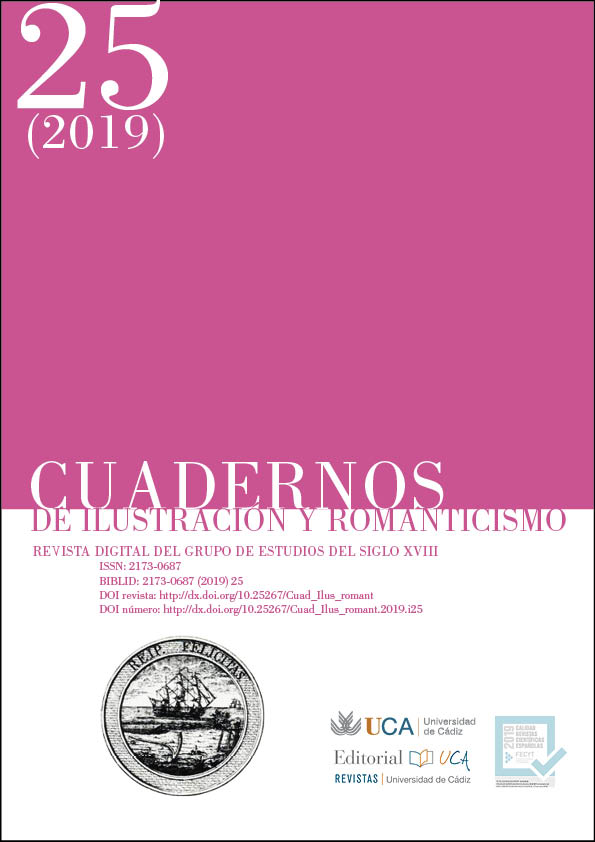Fisonomías de lo invisible: Raza y nación en la literatura decimonónica española (1808-1843)

DOI
https://doi.org/10.25267/Cuad_Ilus_romant.2019.i25.3Información
Resumen
Durante el siglo XIX, la idea de raza fue fundamental en el desarrollo del concepto de nación. Las afinidades significativas y dependencia que vinculan a ambos términos han oscilado fundamentalmente en la forma en que estas se expresan, mas siempre manteniendo una naturaleza dual: ambos son factores unificadores y ambos funcionan como principios excluyentes. Desde una perspectiva filológica y en un marco estrictamente peninsular, el presente trabajo intenta arrojar luz sobre la naturaleza y manifestación del constructo raza entre 1808 y 1843, así como de los vínculos que guarda con el concepto nación.
Palabras clave
Descargas
Cómo citar
Licencia

Esta obra está bajo una licencia internacional Creative Commons Atribución-NoComercial-SinDerivadas 4.0.
Los originales publicados en esta revista son propiedad de Cuadernos de Ilustración y Romanticismo: es necesario citar la procedencia en cualquier uso que se haga de los mismos.
Los autores conservan los derechos de autor © y ceden a la revista el derecho de publicación. Podrán alojar sus trabajos en la versión final publicada en páginas personales o destinadas a la divulgación científica siempre que indiquen la procedencia del mismo.






